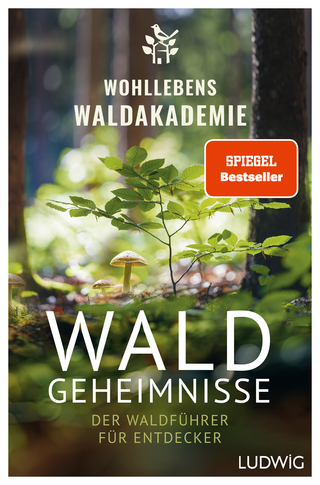
Restoring Neighborhood Streams
Planning, Design, and Construction
Seiten
2016
Island Press (Verlag)
978-1-61091-740-7 (ISBN)
Island Press (Verlag)
978-1-61091-740-7 (ISBN)
This book presents the author’s thirty years of practical experience managing long-term stream and river restoration projects in heavily degraded urban environments. Although the case studies are local, the principles, methods, and tools are universal, and can be applied in almost any city in the world.
Thirty years ago, the best thinking on urban stream management prescribed cement as the solution to flooding and other problems of people and flowing water forced into close proximity. Urban streams were perceived as little more than flood control devices designed to hurry water through cities and neighborhoods with scant thought for aesthetics or ecological considerations. Stream restoration pioneers like hydrologist Ann Riley thought differently. She and other like-minded field scientists imagined that by restoring ecological function, and with careful management, streams and rivers could be a net benefit to cities, instead of a net liability. In the intervening decades, she has spearheaded numerous urban stream restoration projects and put to rest the long-held misconception that degraded urban streams are beyond help.
What has been missing, however, is detailed guidance for restoration practitioners wanting to undertake similar urban stream restoration projects that worked with, rather than against, nature. This book presents the author’s thirty years of practical experience managing long-term stream and river restoration projects in heavily degraded urban environments. Riley provides a level of detail only a hands-on design practitioner would know, including insights on project design, institutional and social context of successful projects, and how to avoid costly and time-consuming mistakes. Early chapters clarify terminology and review strategies and techniques from historical schools of restoration thinking. But the heart of the book comprises the chapters containing nine case studies of long-term stream restoration projects in northern California. Although the stories are local, the principles, methods, and tools are universal, and can be applied in almost any city in the world.
Thirty years ago, the best thinking on urban stream management prescribed cement as the solution to flooding and other problems of people and flowing water forced into close proximity. Urban streams were perceived as little more than flood control devices designed to hurry water through cities and neighborhoods with scant thought for aesthetics or ecological considerations. Stream restoration pioneers like hydrologist Ann Riley thought differently. She and other like-minded field scientists imagined that by restoring ecological function, and with careful management, streams and rivers could be a net benefit to cities, instead of a net liability. In the intervening decades, she has spearheaded numerous urban stream restoration projects and put to rest the long-held misconception that degraded urban streams are beyond help.
What has been missing, however, is detailed guidance for restoration practitioners wanting to undertake similar urban stream restoration projects that worked with, rather than against, nature. This book presents the author’s thirty years of practical experience managing long-term stream and river restoration projects in heavily degraded urban environments. Riley provides a level of detail only a hands-on design practitioner would know, including insights on project design, institutional and social context of successful projects, and how to avoid costly and time-consuming mistakes. Early chapters clarify terminology and review strategies and techniques from historical schools of restoration thinking. But the heart of the book comprises the chapters containing nine case studies of long-term stream restoration projects in northern California. Although the stories are local, the principles, methods, and tools are universal, and can be applied in almost any city in the world.
Ann L. Riley has served as the Watershed and River Restoration Advisor for the San Francisco Bay Regional Water Board of California since 2001. Since the 1970s, Riley has worked with government agencies, policy institutes, and non-profit organizations on stream and floodplain management and restoration. In 2004, she was awarded the Salmonid Restoration Federation Nat Bigham Restorationist of the Year Award and in 2003 earned the Governor's Economic and Environmental Leadership Award.
| Erscheinungsdatum | 12.08.2016 |
|---|---|
| Reihe/Serie | Science and Practice of Ecological Restoration |
| Verlagsort | Washington |
| Sprache | englisch |
| Maße | 178 x 254 mm |
| Gewicht | 476 g |
| Themenwelt | Sachbuch/Ratgeber ► Natur / Technik ► Natur / Ökologie |
| Sachbuch/Ratgeber ► Natur / Technik ► Naturführer | |
| Naturwissenschaften ► Biologie ► Ökologie / Naturschutz | |
| Naturwissenschaften ► Geowissenschaften ► Hydrologie / Ozeanografie | |
| Technik ► Elektrotechnik / Energietechnik | |
| Technik ► Umwelttechnik / Biotechnologie | |
| ISBN-10 | 1-61091-740-5 / 1610917405 |
| ISBN-13 | 978-1-61091-740-7 / 9781610917407 |
| Zustand | Neuware |
| Haben Sie eine Frage zum Produkt? |
Mehr entdecken
aus dem Bereich
aus dem Bereich
über 500 faszinierende Gesteine, Minerale, Edelsteine und Fossilien
Buch | Hardcover (2023)
DK Verlag Dorling Kindersley
26,95 €
vollständig aktualisierte Neuausgabe mit den zusätzlichen …
Buch | Softcover (2023)
Westend (Verlag)
22,00 €


